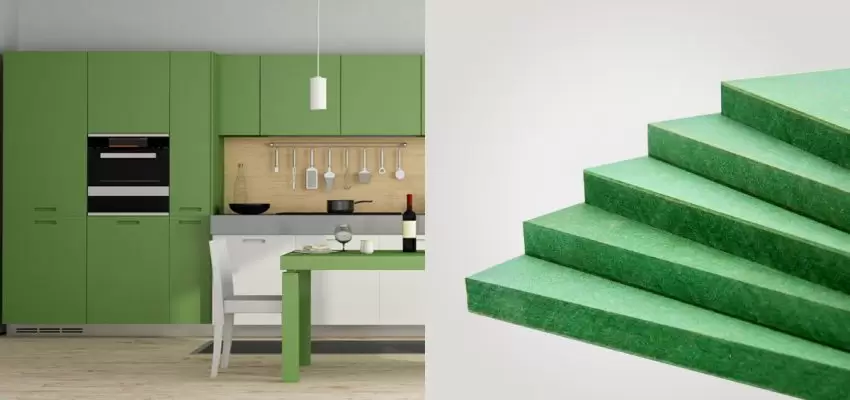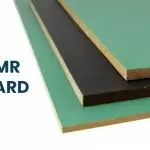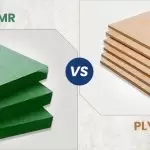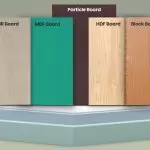High-density, high moisture resistance (HDHMR) boards have become increasingly important construction materials due to their superior strength, dimensional stability, and moisture resistance compared to traditional wood-based boards. This article explores the latest design and construction trends for HDMR boards, focusing on material advancements, manufacturing processes, and applications. It examines the drivers behind these innovations, such as sustainability concerns, changing building codes, and the need for higher performance. Contemporary HDMR board compositions, production methods, and emerging uses in construction are discussed in detail. The future outlook for HDHMR boards is also assessed based on industry projections and research directions.
Post your Requirement
Wood-based construction materials like plywood, particle board, and fiberboard have been industry standards for decades. However, their limitations in terms of moisture resistance, dimensional stability, and strength have driven the development of advanced engineered wood materials. Among these, high-density, high moisture resistance (HDMR) boards have emerged as a promising solution for applications requiring exceptional durability and performance.
HDHMR boards combine high wood content with specialized binders and manufacturing processes to create exceptionally dense and moisture-resistant panel products. Their unique properties make them well-suited for a wide range of interior and exterior construction applications, from flooring and cabinetry to exterior siding and structural components.
This article delves into the latest trends shaping the design and construction of HDHMR boards, examining innovations in materials, manufacturing methods, and end-use applications driving this dynamic sector.
Material Advancements:
At the core of HDHMR board innovation are advancements in the raw materials and binder systems used in their production. Contemporary trends focus on enhancing performance, improving sustainability, and meeting evolving regulatory standards.
- Wood Fiber Sources: Traditionally, HDHMR boards relied heavily on wood chips and sawmill residues as the primary fibre sources. However, there is a growing shift towards utilizing alternative fibre materials, such as agricultural residues (e.g., wheat straw, rice husks) and recycled wood fibres from construction and demolition waste. These alternative fibres not only promote sustainability but can also impart unique physical and mechanical properties to the finished boards.
- Binder Systems: The binders used in HDMR board production play a critical role in determining the board’s strength, moisture resistance, and overall performance. Conventional binders like urea-formaldehyde (UF) and phenol-formaldehyde (PF) resins are being replaced or augmented with more environmentally friendly alternatives, such as pMDI (polymeric methylene diphenyl diisocyanate), bio-based resins derived from plant sources, and inorganic binders like cement or gypsum.
- Additive Integration: Incorporating functional additives into the HDHMR board composition is another emerging trend. These additives can range from fire retardants and preservatives to reinforcing fibres (e.g., glass, carbon, or natural fibres) and nanomaterials. Careful selection and integration of these additives can enhance specific properties like fire resistance, dimensional stability, or mechanical strength, tailoring the boards for specialized applications.
Manufacturing Processes Of HDHMR Boards:
Innovations in manufacturing processes have played a pivotal role in improving the quality, consistency, and efficiency of HDHMR board production. Contemporary trends in this area include:
- Continuous Pressing: Traditional batch pressing methods are being replaced by continuous pressing systems, which offer higher production rates, better thickness control, and more uniform board properties. These systems employ continuous belt presses or roller presses to apply consistent pressure and heat throughout the board formation process.
- Energy-Efficient Curing: Advancements in curing technologies, such as radio frequency (RF) and microwave curing, have led to more energy-efficient and faster curing processes. These methods allow for more precise control over the curing conditions, resulting in improved board quality and reduced production costs.
- Automated Quality Control: The integration of advanced sensors, imaging systems, and real-time process monitoring has enabled better quality control during HDHMR board manufacturing. These systems can detect defects, monitor Board density and moisture content, and provide feedback for process adjustments, ensuring consistent product quality.
Applications in Construction:
The unique properties of HDHMR boards have opened up new opportunities for their use in various construction applications, driving innovation in product design and installation methods.
- Flooring Systems: HDHMR boards have gained traction as high-performance underlayment and subfloor materials in residential and commercial buildings. Their moisture resistance and dimensional stability make them suitable for use with various flooring types, including laminate, engineered wood, and tile. Additionally, specialized HDHMR boards with enhanced acoustic and thermal insulation properties are being developed for use in multi-story buildings and sound-sensitive applications.
- Exterior Cladding and Siding: The exceptional moisture resistance and durability of HDHMR boards make them well-suited for exterior cladding and siding applications. Manufacturers are developing pre-finished HDHMR board products with integrated UV protection and decorative surfaces, providing an attractive and low-maintenance alternative to traditional siding materials.
- Structural Components: With their high strength-to-weight ratio and dimensional stability, HDHMR boards are finding applications as structural components in construction. They are being used in load-bearing wall systems, roof and floor trusses, and even as structural insulated panels (SIPs) for energy-efficient building envelopes.
- Cabinetry and Millwork: The density and moisture resistance of HDMR boards make them suitable for use in cabinetry, millwork, and other interior woodworking applications. Their resistance to swelling and deformation in high-moisture environments makes them ideal for use in kitchens, bathrooms, and other areas prone to moisture exposure.
Future Outlook:
The future of HDHMR boards in construction is promising, driven by several key factors:
- Sustainability Initiatives: With increasing emphasis on sustainable construction practices, the use of alternative fibre sources, bio-based binders, and recycled materials in HDHMR board production is expected to grow. This aligns with industry efforts to reduce environmental impact and promote circular economy principles.
- Regulatory Changes: Evolving building codes and environmental regulations are likely to drive the adoption of high-performance, moisture-resistant materials like HDHMR boards. These boards can help meet stricter energy efficiency, indoor air quality, and durability requirements for residential and commercial buildings.
- Market Demand: The growing demand for versatile, durable, and low-maintenance construction materials is expected to fuel the growth of the HDHMR board market. Their suitability for a wide range of applications, from flooring to structural components, makes them an attractive choice for builders and contractors.
- Research And Development: Ongoing research and development efforts are focused on further optimizing HDMR board compositions, manufacturing processes, and end-use applications. Areas of interest include enhancing mechanical and thermal properties, developing novel binder systems, and exploring new fibre sources and additives.
Conclusion
HDMR boards have emerged as a robust and versatile construction material, driven by the need for high-performance, moisture-resistant, and sustainable building products. Contemporary trends in design and construction have focused on material advancements, manufacturing process innovations, and exploring new applications for these engineered wood panels.
From alternative fibre sources and bio-based binders to energy-efficient curing methods and automated quality control, the HDHMR board industry is continuously evolving to meet changing market demands and regulatory requirements. Furthermore, the unique properties of these boards have opened up opportunities in applications such as flooring systems, exterior cladding, structural components, and cabinetry, showcasing their versatility in construction.
As sustainability initiatives, regulatory changes, and market demand continue to shape the construction industry, HDHMR boards are poised to play an increasingly important role. With ongoing research and development efforts focused on optimizing their performance and exploring new compositions and applications, the future of HDHMR boards in construction looks promising.
Read Also: 10 Reasons Why HDHMR Boards Are Best For Kitchen Renovations























Post A Comment